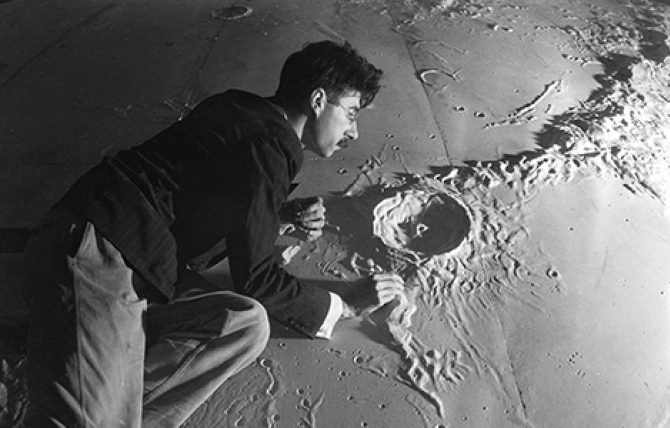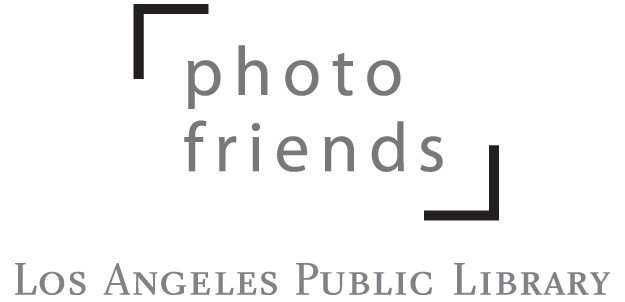An early exhibit commissioned for the Griffith Observatory was a 38’ plaster scale model section of the moon. Architect and astronomer Roger Hayward (pictured here) assured the accuracy of the model sculpted by Caspar Gruenfeld. Security Pacific National.
For the 50th anniversary of the moon landing this year, we searched our photo archive to illuminate local contributors to the aerospace industry who made the Apollo 11 mission possible. It’s only fitting, after all, that a city best known as a star factory would also play a starring role in the advancement of space exploration. From research and development in Pasadena to rocket manufacturing in Canoga Park, with contributions from residents covering nearly every corner of the city, Los Angeles was practically a NASA satellite campus.
Being a populous city dealing with major light pollution, we are at a disadvantage for seeing stars easily. Still, we share in that common human fascination with the celestial heavens above. Many Angelenos get their first good look at our night sky on school field trips to the Griffith Observatory, reclined in planetarium seats. Something guests may not realize is that the Apollo crews learned to navigate those starry skies sitting under the very same dome. If you are lucky enough to be visiting the Griffith Observatory on a clear night, stargazing is offered under another iconic dome through an original 1935 Zeiss telescope. One of my favorite memories from when I worked at the Observatory was assisting the telescope demonstrator as a young visitor stared in disbelief at the view of Saturn. The awestruck youth repeatedly looked back at us and back at the planet asking if we had placed a sticker at the end of the telescope, or were those really what the rings looked like. Watching their eyes light up with wonder and awe reminded me how fortunate we are as Angelenos to have such a beautiful landmark to visit. The Observatory not only shows us how sprawling our city is, but how immense our universe is as well. While the Griffith Observatory is one of the most notable observatories in the world, we also have other historically important domed telescopes throughout our city. Some of these telescopes were built by private citizens for their personal use, while others were constructed purely for the benefit of scientific research.
President John F. Kennedy in May of 1961, addressed a special joint session of Congress where he spoke about the importance of sending an American to the moon by the end of the decade. By the late 1950’s, Russia had gained the lead in the space race by orbiting the first man, so landing on the moon was an opportunity for America to move ahead with this major technical achievement. Post World War II, the nations of the world were wary of each other and having just one country dominate space exploration was considered a security risk. The emergence of this new frontier was perceived as a potential theater for war, so it was in the United States’ best interest to not let ourselves be left unguarded.
This huge investment in space exploration fueled by ambition and politics, drove many people to lend their talents towards fulfilling this dream. Despite discrimination in hiring practices, many minorities were still able to make lasting contributions to aerospace history. We are fortunate here at the Los Angeles Public Library to oversee the Valley Times Newspaper image archive which, among many subjects, documents the pioneering women of Rocketdyne who worked in multiple fields ranging from technical drawing and wiring junction boxes to analyzing rocket fuels. The Valley Times also covered the story of one of the first African Americans trained as an astronaut but whose career was halted by discrimination. He is remembered and given his rightful place in history through those photographs.
The 50th anniversary of the moon landing may prompt us look back and try and see what potential challenges we face as we further our exploration of space. As of now, NASA is planning a return trip to the moon that will send the first female astronaut to the surface under Project Artemis. As we look ahead, past the moon, past Mars, and to the beyond that follows we should remember the small steps that it took to get us up there, and the role our city played in making it so.
—Sye Gutierrez, Administrative Clerk
Photo Collection, Los Angeles Public Library
July 2019

